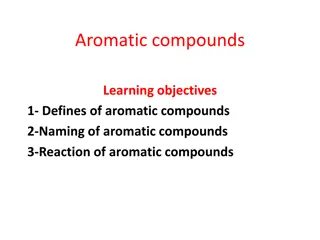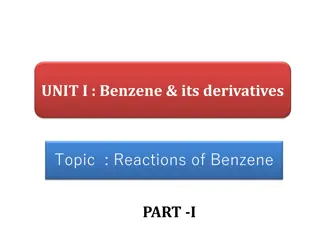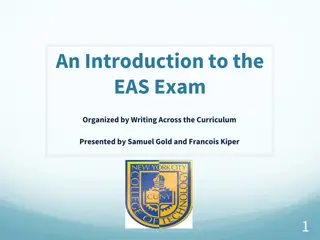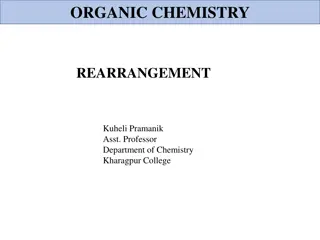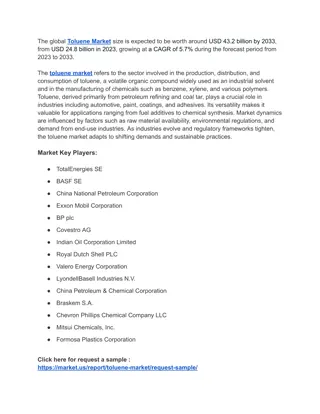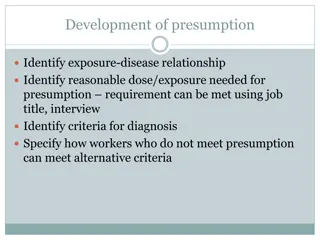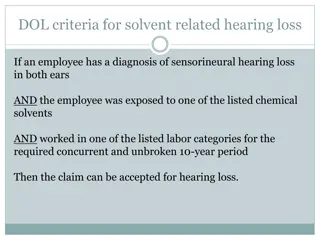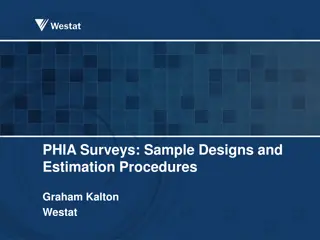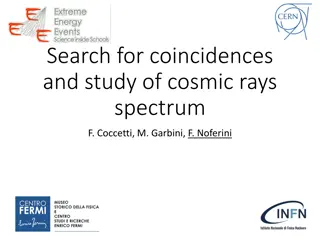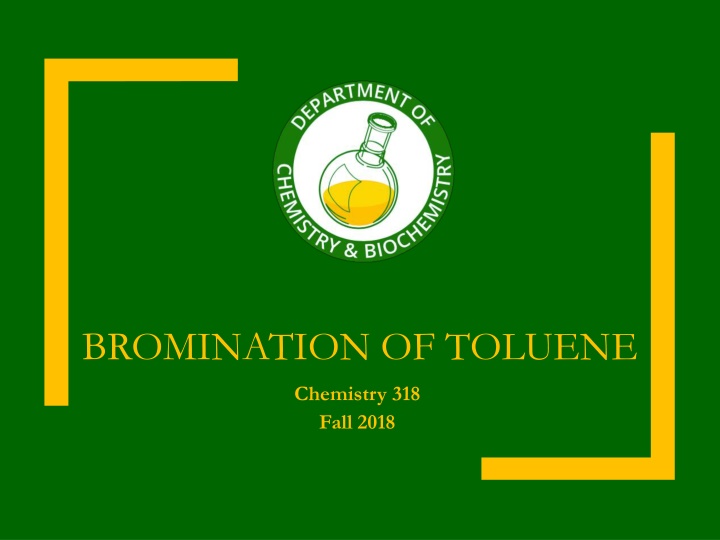
Organic Chemistry Experiment: Bromination of Toluene Procedure
Explore the bromination of toluene experiment in the Chemistry 318 course. Get insights on lab safety, spectroscopy, and note-keeping guidelines for successful completion. Stay informed about due dates and essential procedures.
Download Presentation

Please find below an Image/Link to download the presentation.
The content on the website is provided AS IS for your information and personal use only. It may not be sold, licensed, or shared on other websites without obtaining consent from the author. If you encounter any issues during the download, it is possible that the publisher has removed the file from their server.
You are allowed to download the files provided on this website for personal or commercial use, subject to the condition that they are used lawfully. All files are the property of their respective owners.
The content on the website is provided AS IS for your information and personal use only. It may not be sold, licensed, or shared on other websites without obtaining consent from the author.
E N D
Presentation Transcript
BROMINATION OF TOLUENE Chemistry 318 Fall 2018
3 15 9 21 Cheramie Parriski 22 10 4 16 Rhoades Dimitriev 17 20 2 11 14 8 5 23 Noori Beville 13 19 1 7 Syed Godfrey 6 24 12 18 Instructor Bench
Schedule of day PPE and Pre-lab check at the door Quiz Recitation Safety Put bags away Goggles Gloves Lab Coat Lab part 1 IR Review Lab part 2
Due Dates Today Notebook copies of Bromination of Toluene before leaving the lab Next Week Spectroscopy Problem Set (part I & part II #1) At beginning of lab Bromination of Toluene Report
In Lab Today Review of Electrophilic Aromatic Substitution Bromination of toluene experiment Review of IR Spectroscopy Demonstration of FT-IR; salt plates; %Transmittance vs. Absorption mode
Notebook Keeping Notebooks should be prepared according to the instructions in the Manual pp. 1 20. For this experiment, a Data Table that includes chemical safety notes, MW, density, mass and calculated moles (as measured during lab) is appropriate. Information such as bpt., mpt., density, MW, etc. should always be entered in your notebook as part of your pre-lab and obtained from approved sources. See the Lab Manual Citation section. No Wikipedia No Chembook (the Wikipedia of the chemistry world) no web-based information.
Notebook Keeping (cont.) Record all observations everything you see, smell, feel (temperature changes), etc. Be clear and specific in your descriptions. All calculations (in your notebook and on your report) must be clearly shown and labeled show your work and pay attention to units and significant digits.
Experiment Notes Bromine (Br2) is a hazardous and extremely corrosive substance Lab coat, gloves, and goggles at all times! Change gloves as necessary. Keep vials in hood and prepare salt plates there Your instructor will handle the toluene and bromine. Preparation of staple: sand it vigorously to remove plastic coating. Bend to fit in bottom of vial. Moisten the pH paper before inserting it in the air space above the liquid in the vial.
Experiment Notes During the (forty-five minute) wait time we will review spectroscopy. Do not change any setting on the IR. NaCl plates are very fragile and expensive. Handle with great care and only by the edges.
IR of Product This is what the IR spectrum of your product mixture might look like (in B&W) You will need to draw in the baseline and complete approximate peaks before calculating the area. See Mohrig p. 306 and Lab Manual pp.42-43.
Peak Area by Triangulation Peak Area = h * w * 1.064 Where h = Peak Height w = width of peak at the peak height Note: The curve is assumed Gaussian and the h * w1/2 value is about 6.4% less than the true value, thus the correction factor. Total Peak Area = sum of component peak areas Mole Fraction of component = component peak area/total peak area Mole Percent = mole fraction x 100
Lab Report & Forms See the Report Form for Bromination of Toluene in the Lab Manual (page 163). Follow the instructions for writing reports found at the end of this experiment in the Lab Manual and on BlackBoard under Notebook & Report Formats and Lab Reports-in General . Assemble and staple your report in this order: Report Form Calculations IR spectrum Written report
Electrophilic Aromatic Substitution See the See the Solomons Solomons lecture text for an in lecture text for an in- -depth discussion of Electrophilic Aromatic discussion of Electrophilic Aromatic Substitution. Substitution. depth
Electrophilic Aromatic Substitution Electrophilic Aromatic Substitution (Overall Reaction) H E H H H H + E+ + H+ H H H H H H Although they resemble alkenes, aromatic compounds do not undergo electrophilic addition reactions as alkenes do. Rather, they undergo two-step substitution order to preserve the stable aromatic ring. substitution reactions reactions in
Electrophilic Aromatic Substitution Electrophilic Aromatic Substitution (mechanism) E H E H E H + + + E+ + E The electrophile is attacked by the electrons of the aromatic ring. -H+ A new sigma bond is formed in the resonance stabilized arenium arenium ion intermediate ion intermediate. A proton is lost and the aromaticity is restored.
Electrophilic Aromatic Substitution Electrophilic Aromatic Substitution (mechanism) Electrophiles (electron deficient species; Lewis acids), are attacked by the aromatic sextet of pi electrons in the aromatic ring. An arenium ion intermediate is formed in which the ring has lost its aromaticity. The arenium ion breaks the sigma bond to H+, and the electron pair becomes a pair of pi electrons in the aromatic ring. There are several substitution reagents used in organic chemistry synthesis: Halogenation X2 (X = Cl, Br) HONO2/H2SO4 SO3/H2SO4 RCl/AlCl3 R(C=O)Cl), AlCl3 Nitration Sulfonation Friedel-Crafts Alkylation Friedel-Crafts Acylation
Electrophilic Aromatic Substitution Electrophilic Aromatic Substitution Bromination Bromination In bromination of arenes, the electrophilic bromine is generated by reacting Br-Br with a Lewis acid metal catalyst. A common catalyst is FeBr substance can be produced by the very fast reaction between Fe0 and Br2 (as in this experiment). FeBr3 3. However, this The electrophile is likely to be the very electrophilic Brd+ in the catalytic complex [Br BrFeBr3], although frequently Br+ itself is shown in textbooks.
Electrophilic Aromatic Substitution Electrophilic Aromatic Substitution Reactivity & Orientation Reactivity & Orientation The reactivity of BENZENE itself (no substituent) is used as a reference compound. When there is a substituent group (G) on the benzene ring, the substituent determines both the position and the rate of substitution of the INCOMING electrophile. Substituents affect which position (orientation ) on the ring the ring is attacked by the electrophile in the reaction (o-, m-, or p-). Substituents also affect how fast the electrophile attacks attacks the ring (reactivity). position (orientation ) on how fast the electrophile
Electrophilic Aromatic Substitution Electrophilic Aromatic Substitution Reactivity & Orientation Reactivity & Orientation Bromination of a benzene ring containing an electron donating group (methyl group) is faster than bromination of benzene itself. Substitution of bromine at the ortho/para positions is favored .


